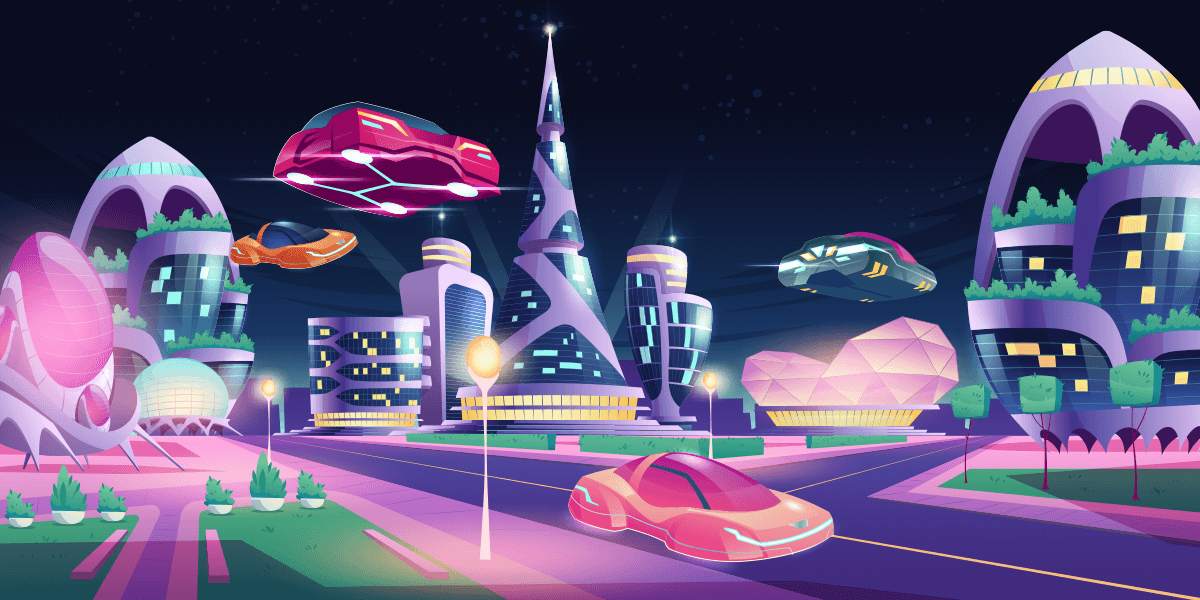What you think future of transportation will be? Transportation has come a long way since the time man started to travel. The invention of the wheel started this journey. After that, there have been great advancements. We have seen wooden carts, wagons, boats, steam engines, locomotives, trams, aircraft, bikes, cars, and of course now autonomous vehicles.
Many questions arise in the mind of people. Some of them are:
- What will the future of transportation be like?
- How will autonomous technology change our roads and skies?
- Which new transportation methods are likely to emerge in the future?
- What impact will driverless cars have on road traffic in urban areas?
- If a self-driving car makes a collision or meets with an accident, who will be held responsible?
Future of transportation – Three key concepts
The future of transportation and the transformation that is likely to take place will mainly rely on the use of advanced technology and infrastructure, energy-efficient alternatives, and smarter technologies.
The three key concepts and trends that will drive the future of transportation will be:
- Autonomous technology
- Electric power
- Smart technology that ensures safety
Evolving transportation innovations to look forward to in the future
The Hyperloop
- The concept of the Hyperloop was first proposed by Elon Musk in the year 2012.
- With Hyperloops, pods or capsules will be able to transport people and goods through tubes using magnetic technology at super-fast speeds of nearly 600 mph.
- This will ease traffic congestion and increase travel speed.
- The Hyperloop will connect different countries, and even continents since it is specifically suited for long-distance travel.
Autonomous aerial vehicles (AAVs)
- These are autonomous drones that have been engineered to carry passengers.
- They make use of horizontal rotors for vertical take-off and landing. Hence, they do not need a runway.
- EHang AAV is the passenger-grade electric autonomous aerial vehicle created for short and medium-haul transportation of passengers. With the EHang AAV, the era of air mobility will begin.
- The testing and demonstrations of AAVs are being carried out and they are likely to be a part of our life soon.
Hoverbikes
- These resemble autonomous aerial vehicles.
- They have four rotors (quadcopters) and have the capacity to carry one individual at a time.
- A Russian company named ‘Hoversurf’ has already built a Hoverbike named S3 2019. This Hoverbike priced at USD 150,000 is capable of flying at a speed of 96 km/hr and an altitude of 33 feet.
Waymo – Google’s former self-driving car project
- Google’s project of self-driving cars began in 2009.
- In the year 2016, Waymo, an autonomous driving technology company became Google’s self-driving car project.
- Waymo became the subsidiary business of Google’s parent company Alphabet Inc.
- After Waymo became a part of Google, it has conducted several public trials of autonomous vehicles driven by the Waymo driver without anyone occupying the driver’s seat.
- Waymo was launched as a separate division by Google to manufacture and launch driverless vehicles for consumers around the world.
- In 2018, Waymo announced that driverless cars will be available by 2020. However, at present, only trial runs are being carried out.
- Waymo’s concept of driverless cars is to use high-resolution powerful cameras and lidar to track different objects in the surroundings and navigate safely to the destination.
- Waymo is testing several autonomous vehicles in limited areas of California and Arizona.
- Waymo has already launched driverless taxi services in Arizona, Phoenix, and San Francisco.
The transportation industry is undergoing a paradigm shift due to the fast-evolving advanced technologies. Autonomous technology is exciting; however, it has its own uncertainties too. For people to embrace driverless cars, it is essential for them to feel safe while the vehicle is running. Companies involved in the manufacture of autonomous vehicles need to ensure safety and zero emissions. Check out our virtual driverless car course that would give you a better understanding of the concept and give better insights into the technology used behind driverless cars.

